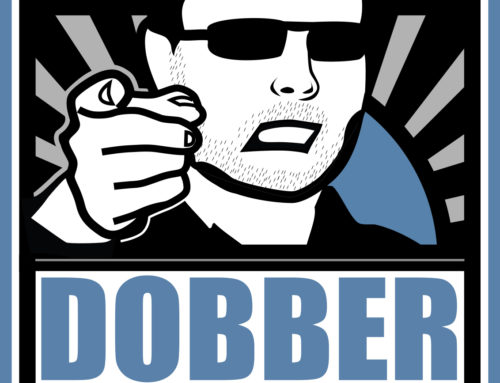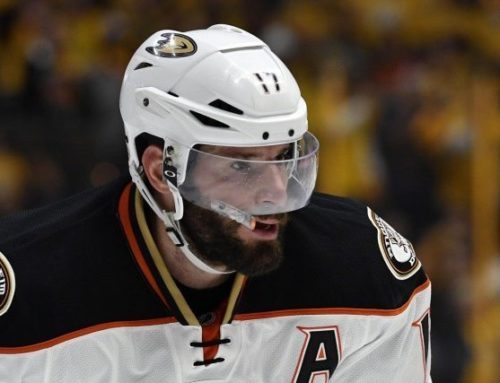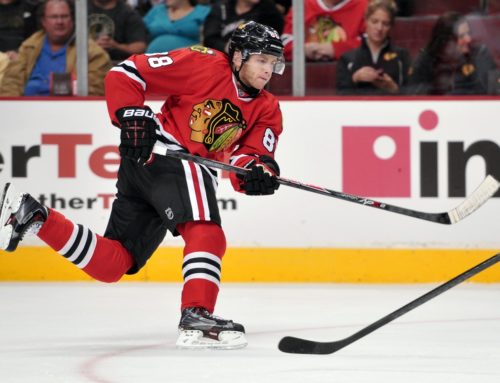What to Watch For: Six Sources of Struggle Pt. II
Justin Goldman
2008-08-11

Part I was capped with my statement that “Momentum…can still be successfully calculated after analyzing body language.” Since gauging a goalie’s momentum depends so much on your ability to read their body language (comprised of all movements and reactions), let’s dive right in and start learning exactly what to watch for.
Since the Six Sources of Struggle can’t be quantified with a numerical value, weighing one goalie against another is a moot point. Focus your analysis on the goalie as an individual respective to only his previous games and that will help you decide just what type of momentum was gained or lost. One goalie may be struggling more than another, but by exactly how much is impossible to determine.
In order to really maximize your understanding of how a goalie is playing compared to others that interest you, develop a system. For example, put your goalies on a dry erase board and start a line graph in the pre-season. Every goalie starts at the same value…a relative zero. As each game ends, decide whether the goalies gained or lost momentum. Win or lose, did they play better or worse than the last game? Just a few weeks into the season you’ll have a good idea of which goalies are more consistent than others, rather than focusing entirely on the usual statistics presented to you.
The Six Sources are encompassed by the core values of goaltending – body control and balance. Is the goalie’s overall movement well-balanced, square and mobile for second or third scoring opportunities? Alas, the beauty of goaltending today – much more standardized than you would think. Hybrid, Quebec, half, flybrid, whatever type of style you see, it’s all the same idea of building a solid wall and then moving it behind the puck, no matter where it happens to go. So without further…he-he-hesitation (har har) here is my official Six Sources of Struggle list!
I. HESITATION
You know how to analyze what a player does and then gauge what he could do next. Goalies are more complicated, however, because few truly know what to look for and few focus their attention while watching a game 100% on the goalie. I can tell you from experience, however, that once you start to peel back the layers of a goalie’s game, it gets more and more detailed and interesting to watch develop, or in some cases, crash and burn.
One major sign of struggle through body movement is hesitation. Does the goalie seem to pause for a moment before reacting? A hesitant goalie almost always makes a slow decision handling the puck. Does he hold it for unnecessary reasons? This could be due to a lack of confidence. Is he unsure of where to direct a shot on net, or where an outlet pass from behind his goal is heading? How deep is he playing in the crease? Hesitant goalies are often caught deep in their crease because they depend solely on their quick reflexes, not on their positioning. Goalies must consistently play at the top of their crease or suffer the consequences of constantly being sniped. Unless it’s Felix Potvin, Henrik Lundqvist or Manny Legace, all NHL goalies learn to get out of their comfort zone and take away the shooter’s time and space.
II. REBOUNDS
Rebound control is the most obvious sign of struggle, but not necessarily the most important for the goalies on your team. For example, if Miikka Kiprusoff gives up a rebound in the slot and effortlessly pushes to the top of his crease to make a nice rebound save, that’s not the same as Jason LaBarbera giving up the same type of rebound and ending up out of position because he’s so bulky and awkward in net. LaBarbera can’t get away with that, yet Kiprusoff handles it to perfection on a much more consistent basis. Which goalie is impacted more by the same type of rebound situation?
If shots up high are constantly going back towards the center of the ice and not to the corners, there are problems with the goaltender’s movement. It could be coming from any of the other six sources of struggle, so rebound control acts like a window into the other sources. Rebound control is usually the last step a goalie needs to take from the AHL to the NHL … other than adjusting to the overall speed of the NHL game, it’s all about rebound control and consistency.
III. THE FIRST SAVE
If the goaltender fails to make the first save in a game, or seems to allow a number of early saves in a pre-game warm up, that’s a huge source of why a goalie is possibly struggling. Now I’m not saying that if a goalie allows the first goal, he’s automatically struggling. The key, of course, is to analyze how that goal was scored. There’s an obvious difference between one-timers from the slot and an easy shot from the point. If a goalie allows a horrible goal from a bad angle, that should raise eyebrows. How the goal is scored plays a major role in how he handles the next scoring opportunity.
IV. LACK OF AWARENESS / ALERTNESS
Is the goalie in a constant state of readiness or does he show signs of complacency? A good way to gauge this is by watching plays that originate from either side of him, either along the lower half-boards or directly along his goal line. Does he move in harmony with the pass, or does he watch it and take a second to move his body? A relaxed, alert goalie will move with the puck and track it with his eyes all the time. A tense, unaware goalie will watch it travel for a moment AND THEN react. There is a huge difference, especially if the shooter receives the pass, reads the goalie’s hesitation and fires a shot on net. And since the most efficient body movement incorporates a number of powerful pushes in the butterfly position with the skate’s inside edges, it’s only natural that goalies will not always execute it the same way every time. That’s why consistency and repetition is the basis of a goaltender’s practices all season long.
V. IMPATIENCE / LUNGING
Goaltenders must stay patient in any type of one-on-one or odd-man scoring opportunity. There should be no reason to attack a player and go after a puck, unless it is a poke-check situation and the puck carrier’s head is down. Other than that, a goalie must wait for plays to develop and let the puck hit them (otherwise known as the Velcro Effect…pucks should stick to a goalie and be held onto). As soon as a goalie tries to go out and attack a shooter, boy is he in trouble.
Lunging is the act of going after a player to try and make a save. Watch as closely as possible to see what kind of angle the shoulders display. If a goalie is being patient, his shoulders will be square – parallel with the posts. A straight, upright back in the butterfly position proves that he is ready and waiting for the puck to hit him. If his shoulders dip to either side or he’s bending forward, troubles brewing.
VI. MENTAL FOCUS / ATTITUDE
Never overlook the importance of attitude, character and work ethic in a goaltender. Last year there were a handful of stories, most notably that of Ray Emery, that proves what impact a certain defective aspect of character can do to their playing ability and overall fantasy value. I was dead on about Emery’s career. He was headed nowhere and even if a team did tend him an offer, I don’t think he would have been able to stay competitive in the NHL for very long.
On the opposite end of the spectrum you have Jose Theodore, who pulled on his work boots and revived his career last season. Now I’m scrutinizing Theodore for leaving such a warm home, where he had a great goalie coach and a ton of momentum – but an extra $1 million over two years was the difference in his decision to head to Washington.
Next week I will discuss the importance of a goalie’s mental focus and how it can impact him not only in the time-frame of a single game but over the course of an entire season.





 BUF
BUF N.J
N.J PHI
PHI MIN
MIN FLA
FLA WPG
WPG VAN
VAN TOR
TOR CGY
CGY